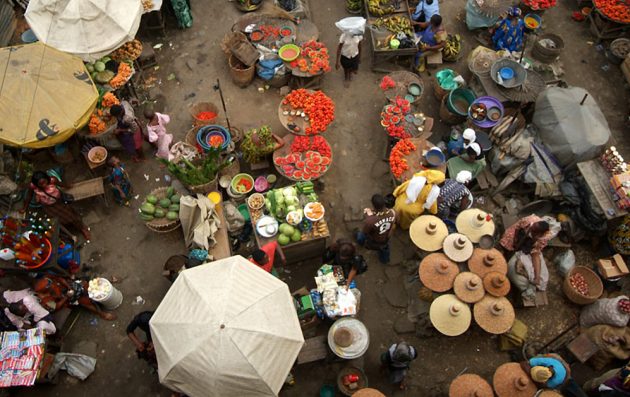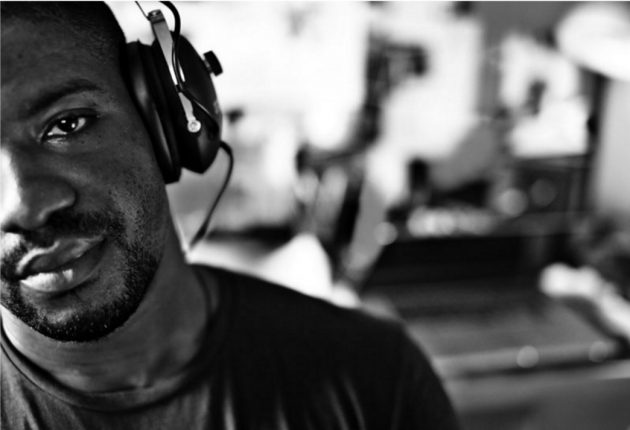By Sabrina Greene
Bells ring, but it’s not your grandmother calling you to dinner from the backyard. Bells ring and people shout, but it’s not in a train station. Bells ring, people shout and a motorcycle whizzes by. Cars honk. “Dolla dolla dolla,” the hawkers call.
Despite standing in an underground gallery at the Smithsonian’s National Museum of African Art in Washington, D.C., visitors are instantly transported to the Balogun Market in Lagos, Nigeria, through Emeka Ogboh’s sound art installation, “Market Symphony.” Open through Sept. 24, this is the museum’s first sound-art installation, thanks to curator Karen Milbourne, who has a special interest in sound art.
Ogboh appeals directly to only one of the five senses—hearing—to re-create the atmosphere of an open-air market. Upending the traditional museum visitor experience presents several opportunities.

Lago’s Balogun Market (Photo by Adolphus Opara)
“In addition to showcasing some of the very specific sounds that are so characteristic of vibrant, diverse African spaces, it’s allowed us to be accessible to communities who maybe don’t always get to enjoy an art museum, like the visually impaired, because they can experience the gallery as it is sculpted by sound,” Milbourne says. “When you’re drawn to a sense that you’re not anticipating experiencing, you almost give it more attention. It makes you appreciate the nuances between the visual and the auditory.”
Ogboh worked meticulously to ensure the sounds of his work were authentic to Lagos. He chose eight distinctive voices of vendors from Balogun and recorded them individually to create a clean, quality-controlled sound. On-site in D.C., he recorded the sounds of the gallery space—static, air conditioning— to make sure they would not interfere with his piece.

Emeka Ogboh (Photograph by Adolphus Opara) (Click photo for Emeka Ogboh’s playlist on Soundcloud.com)
Milbourne describes the African continent as a “sonic landscape. To walk into an installation that reveals the intense urban experience that’s so characteristic of so many spaces in Africa” is an important experience to offer, she says.
The audio loop runs about 30 minutes and has 28 different channels, or specific sounds, playing at once. Ogboh, whom Milbourne describes as very tall, has taken into account the height of the speakers. There are speakers at various ear levels on the walls of the room, and hidden speakers up in the ceiling and down in the floor corners. This allows sound to move into the ear and can create the sensation of a motorcycle or vendor passing by a standing visitor.
“I often find people just sitting in there with their eyes closed and I love that,” Milbourne says. Other visitors sometimes aim their ears toward specific speakers and sounds, while children are often content to wander the room.
Sound plays an important role when thinking about place. The din of the Balogun Market is unique to that place and Ogboh chose the sounds deliberately. At the same time, individual sounds may hold other significance for visitors.
“Lagos has a specific soundtrack, sounds you don’t hear anywhere else,” Milbourne says. The sounds people hear in the installation “evoke so many memories, or make you recall being somewhere, or feel you have a connection in a different way.”
For those who have never been to Lagos, “Market Symphony” might prompt them to navigate between visions of Lagos itself and their own memories of other places triggered by the sounds in the installation. But for a Nigerian, the installation evokes memories of home.
“I think in America it’s a wonderful experience to have that landscape transported 5,000 miles, but for a Nigerian, it’s suddenly, ‘Oh my God, I’m home,’” Milbourne concludes.






